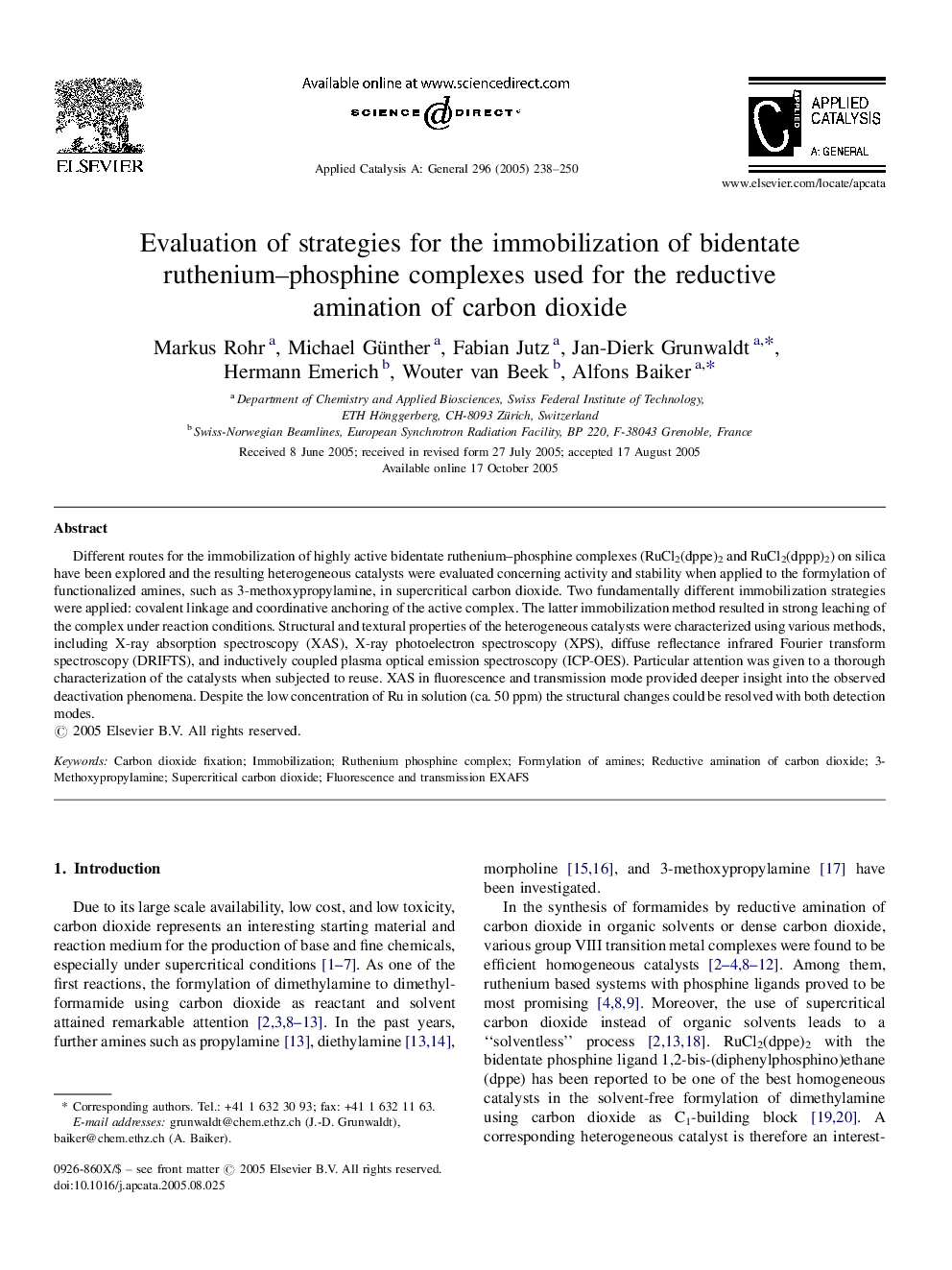| Article ID | Journal | Published Year | Pages | File Type |
|---|---|---|---|---|
| 10239031 | Applied Catalysis A: General | 2005 | 13 Pages |
Abstract
Different routes for the immobilization of highly active bidentate ruthenium-phosphine complexes (RuCl2(dppe)2 and RuCl2(dppp)2) on silica have been explored and the resulting heterogeneous catalysts were evaluated concerning activity and stability when applied to the formylation of functionalized amines, such as 3-methoxypropylamine, in supercritical carbon dioxide. Two fundamentally different immobilization strategies were applied: covalent linkage and coordinative anchoring of the active complex. The latter immobilization method resulted in strong leaching of the complex under reaction conditions. Structural and textural properties of the heterogeneous catalysts were characterized using various methods, including X-ray absorption spectroscopy (XAS), X-ray photoelectron spectroscopy (XPS), diffuse reflectance infrared Fourier transform spectroscopy (DRIFTS), and inductively coupled plasma optical emission spectroscopy (ICP-OES). Particular attention was given to a thorough characterization of the catalysts when subjected to reuse. XAS in fluorescence and transmission mode provided deeper insight into the observed deactivation phenomena. Despite the low concentration of Ru in solution (ca. 50Â ppm) the structural changes could be resolved with both detection modes.
Related Topics
Physical Sciences and Engineering
Chemical Engineering
Catalysis
Authors
Markus Rohr, Michael Günther, Fabian Jutz, Jan-Dierk Grunwaldt, Hermann Emerich, Wouter van Beek, Alfons Baiker,
